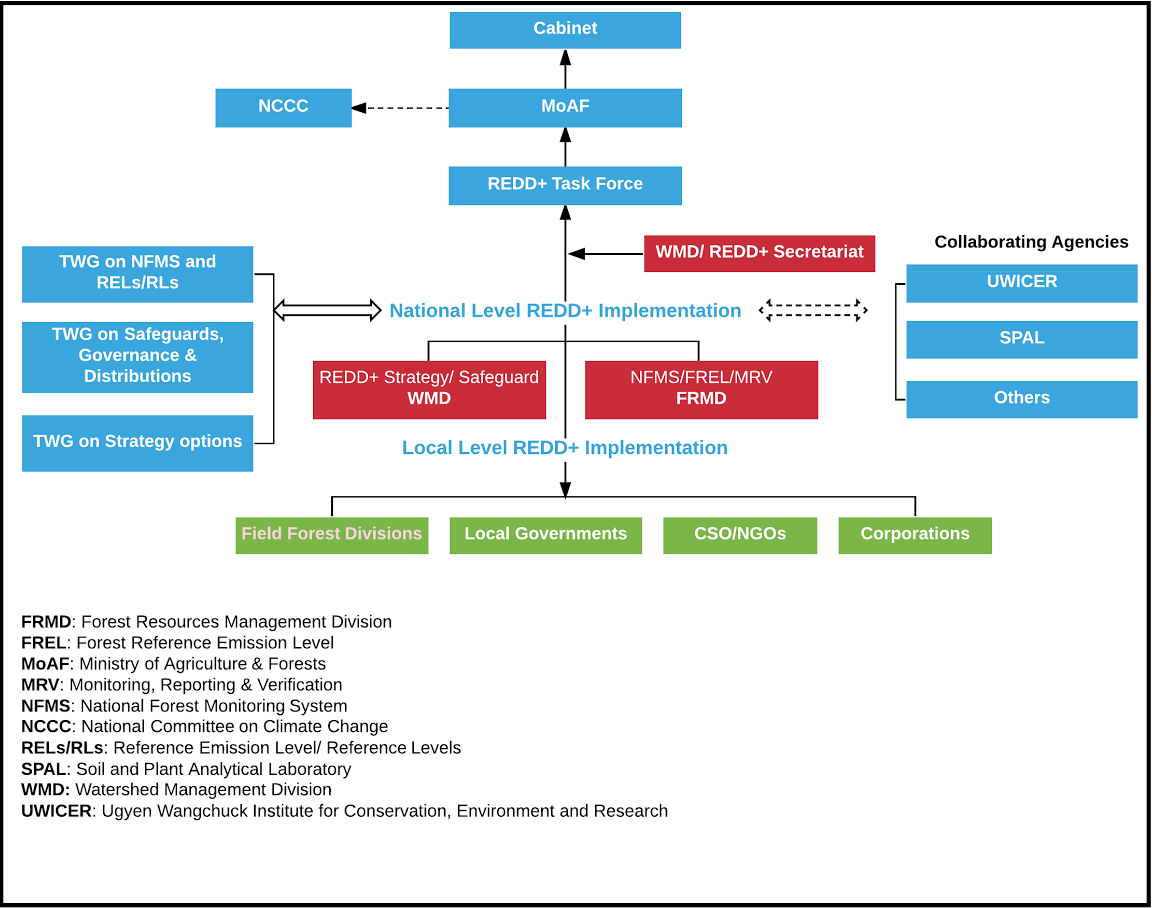Program Structure
The Constitution of Bhutan enshrines protection and conservation of the environment and mandates the maintenance of 60% forest cover in perpetuity. Over the years, a set of strong laws and policies have evolved to ensure the protection, management and sustainable use of forests. The overall goal of the Bhutan REDD+ is to complement RGoB’s vision of an inclusive green economy and climate change commitments.
It will do this by preparing Bhutan to engage in and benefit from the potentially emerging performance-based system from REDD+ within the context of the international climate negotiations of the UN Framework Convention on Climate Change (UNFCCC). Watershed Management Division (WMD) under Department of Forests & Park Services is the focal office for coordinating REDD+ program of Bhutan. Since 2010, WMD has carried out series of studies and workshops related to REDD+ with financial support from the UN-REDD and SNV.
In 2013, WMD secured financial support from the Forest Carbon Partnership Facility (FCPF) of the World Bank for implementing the REDD+ Readiness Proposal (R-PP). The REDD+ readiness implementation framework was proposed during the R-PP and adapted as the R-PP implementation was carried out. As per the framework, REDD+ Readiness implementation is coordinated by the WMD, which serves as the REDD+ Secretariat supported by the REDD+ Task Force and REDD+ Technical Working Groups. The lead for development of REDD+ strategy options and safeguards is WMD while Forest Resources Management Division (FRMD) is the lead for the components such as National Forest Monitoring Systems, Forest Reference Level and MRV. At the local level, the field divisions of Department of Forests & Park Services (DoFPS), local governments, Civil Society Organizations (CSOs)/Non-Governmental Organizations (NGOs) and Corporations is involved as per their mandates and relevance to REDD+. Different agencies are represented in the TWGs and REDD+ Task Force.


